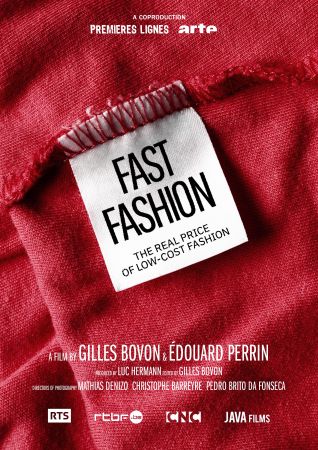
Fast Fashion: The Real Price of Low-Cost Fashion 2020
Distributed by Collective Eye Films, 1315 SE 20th Ave. #3, Portland OR 97214; 971-236-2056
Produced by Premières Lignes
Directed by Gilles Bovon and Edouard Perrin
Streaming, 52 mins
High School - General Adult
Documentaries; Ecology; Fashion Design; Textiles
Date Entered: 05/02/2022
Reviewed by Christina R. Hilburger, Research and Information Literacy Services Librarian, SUNY FredoniaFast Fashion: The Real Price of Low-Cost Fashion from Collective Eye Films is an examination of the rapid production of short-term fashion trends with the use of low-quality materials to keep costs competitively low for consumers. Disposable fashion has allowed consumers to constantly renew their wardrobes. This fast-fashion phenomenon has detrimental impacts on both the environment and the garment workers who produce the clothing in hazardous working conditions for low wages. As the title suggests, the documentary reveals the hidden price we all pay when we choose to purchase these products.
While there are numerous documentaries that focus on fast fashion and the garment industry, (see The True Cost, Made in Bangladesh, The Clothes We Wear, RiverBlue, etc.) this documentary stands on its own. The filmmakers effectively demonstrate the pervasiveness of fast fashion in society by interweaving a variety of sources, including news reports, interviews, and undercover footage. They also examine the psychological aspects that brands tap into to keep consumers coming back for more. Utilizing social media influencers, invoking consumers’ reward-processing mechanisms, and keeping folks feeling like they are missing out on a good deal, these companies have fine-tuned their marketing strategies to the point where disposable fashion has become the norm.
Directors Gilles Bovon and Èdouard Perrin help establish the origins of this industry and the factors leading to the alarming exponential growth of this current throw-away culture. The expectation is for these garments to be replaced rapidly, with items sometimes only being used once or twice, if at all, as suggestively highlighted in the opening of the film. The film also demonstrates how these “unbeatable prices” come at a huge ecological cost, both in terms of human health and environmental degradation. As the second most polluting industry in the world, the production of textiles has had devastating impacts on local communities.
Fibers that are said to be “green” alternatives are still causing incredible harm to the workers producing them. To highlight this form of greenwashing, worker interviews from a production site are persuasively incorporated into the film. Many of these workers said they were forced to work around fumes and hazardous materials without training. Despite being told the chemical was safe to work with, various health issues have been documented, from loss of fertility to vascular problems. Additional health issues were found downstream after resident complaints raised questions from authorities, leading a company to provide bottled water to the community after decades of hazardous waste polluted the local water source.
Another interesting aspect of this film is the particular lens they hold to the copy-and-paste theft of higher-end brands’ designs. As fashion trends now move so quickly with the advent of social media, it is nearly impossible for fast fashion companies to produce original work. Fast fashion companies like Zara, for example, have been caught outright stealing designs and reproducing them at a lower cost. A portion of the film focuses on the fine line between inspiration and outright theft of ideas, specifically digging into the Rains v. Zara case, where Zara produced a nearly identical copy of a small Danish brand’s raincoat.
From design to production, the impact of disposable fashion trends is finely laid out in Fast Fashion. This 52-minute documentary touches on numerous aspects of the textile industry, making it an appropriate addition for most libraries. The film could serve as a starting point for discussion in both college-level and advanced high school classroom settings.
Awards:Festival du Film Vert 2021 Official Selection; Seoul Eco Film Festival 2021 Official Selection
Published and licensed under the Creative Commons Attribution 4.0 license. Anyone can use these reviews, so long as they comply with the terms of the license.